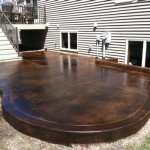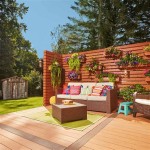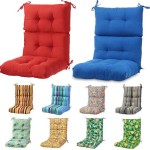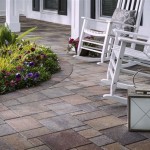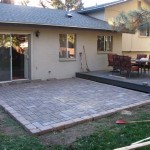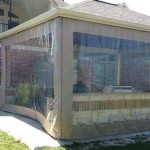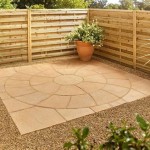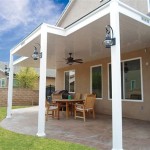How to Build Patio Furniture with Cinder Blocks: A Comprehensive Guide
Cinder block furniture offers a durable, customizable, and cost-effective alternative to traditional patio sets. Its inherent modularity allows for a wide range of design possibilities, adapting to various outdoor spaces and aesthetic preferences. This article provides a detailed guide on how to construct patio furniture using cinder blocks, covering material selection, design principles, construction techniques, and finishing options.
Before embarking on the project, careful planning is crucial. This involves determining the dimensions of the desired furniture, sketching a design, calculating the required number of cinder blocks, and choosing appropriate accent materials like wood, cushions, or fabric. Consider factors such as seating capacity, comfort level, and overall aesthetic appeal of the furniture in relation to the surrounding environment.
1. Planning and Material Selection
The planning phase is essential for a successful cinder block furniture project. The first step involves defining the desired function and dimensions of the furniture. For instance, a simple bench might require significantly fewer materials than a complete sectional sofa. Accurately measuring the intended space for the furniture will help determine the optimal length, width, and height of the structure.
Next, sketch a detailed design. This design should clearly illustrate the arrangement of the cinder blocks, the type of infill material (if any), and the placement of cushions or other comfort elements. Consider the structural stability of the design. Cinder blocks, while strong, can be prone to tipping if not properly arranged. Interlocking or overlapping the blocks can significantly improve stability.
Calculating the required materials is a straightforward process once the design is finalized. Refer to the sketch and count the number of cinder blocks needed. Add a few extra blocks to account for potential breakage or design modifications. Similarly, calculate the amount of infill material, such as lumber, needed to create seating surfaces or backrests.
The selection of materials plays a pivotal role in the longevity and aesthetic appeal of the finished furniture. Cinder blocks are readily available at most home improvement stores and come in various sizes and textures. Standard gray cinder blocks are the most economical option, but decorative blocks with textured surfaces or beveled edges can add visual interest. When choosing cinder blocks, inspect each one for cracks or significant imperfections that could compromise structural integrity.
For infill materials, pressure-treated lumber is recommended for outdoor use due to its resistance to rot and insect infestation. Redwood or cedar are naturally durable options but tend to be more expensive. The thickness of the lumber should be sufficient to provide adequate support and prevent sagging. A minimum thickness of 2 inches is generally recommended for seating surfaces.
Comfort elements such as cushions, pillows, and throws are essential for making the cinder block furniture comfortable and inviting. Outdoor fabric is specifically designed to withstand the elements and resist fading, mildew, and water damage. Choose fabrics that complement the overall aesthetic of the outdoor space and provide a comfortable seating experience. High-density foam is recommended for cushions to provide adequate support and maintain its shape over time.
2. Construction Techniques and Assembly
The construction process involves carefully arranging the cinder blocks according to the design plan and securing them together to create a stable structure. Safety precautions are essential throughout the construction process. Wear safety glasses to protect eyes from dust and debris, and use work gloves to prevent cuts and abrasions. If cutting cinder blocks, use a masonry saw with a diamond blade and wear a dust mask to avoid inhaling silica dust.
Begin by preparing the ground surface where the furniture will be placed. Ensure the surface is level and stable. If necessary, use a shovel and level to create a flat, even base. This will prevent the furniture from rocking or tipping. Consider placing a layer of gravel or crushed stone beneath the blocks to improve drainage and prevent weed growth.
Arrange the cinder blocks according to the design plan. Dry-fitting the blocks before applying any adhesive or mortar is recommended to ensure proper alignment and spacing. Adjust the position of the blocks as needed to achieve the desired aesthetic and structural stability. Pay close attention to the alignment of the blocks, ensuring that they are level and plumb.
There are several methods for securing the cinder blocks together. Construction adhesive specifically designed for masonry is a simple and effective option for smaller projects. Apply the adhesive liberally to the mating surfaces of the blocks and press them firmly together. Allow the adhesive to cure according to the manufacturer's instructions.
For larger or more permanent structures, mortar is a more durable option. Mix the mortar according to the manufacturer's instructions, ensuring a consistent consistency. Apply the mortar to the mating surfaces of the blocks using a trowel, creating a bed of mortar approximately 1/2 inch thick. Press the blocks firmly together, removing any excess mortar with the trowel.
After securing the cinder blocks, install the infill material, such as lumber, to create seating surfaces or backrests. Cut the lumber to the appropriate length and width using a circular saw or miter saw. Sand the edges of the lumber to remove any splinters or sharp edges. Secure the lumber to the cinder blocks using construction adhesive or screws.
If using screws, pre-drill pilot holes in the cinder blocks to prevent cracking. Countersink the screws to create a flush surface. Apply a sealant to the lumber to protect it from moisture and UV damage. Allow the sealant to dry completely before adding cushions or other comfort elements.
3. Finishing and Customization Options
The final stage involves adding finishing touches to enhance the aesthetic appeal and comfort of the cinder block furniture. This includes painting or staining the cinder blocks, adding decorative elements, and incorporating comfortable seating options.
Painting the cinder blocks can transform the look of the furniture and create a cohesive design. Use a masonry primer to prepare the surface for painting. Apply two coats of exterior-grade paint in the desired color, allowing each coat to dry completely before applying the next. Consider using a paint sprayer for a smooth, even finish.
Staining the cinder blocks can enhance their natural texture and provide a more subtle look. Use a concrete stain specifically designed for exterior use. Apply the stain according to the manufacturer's instructions, using a brush or roller. Wipe off any excess stain with a clean cloth. Seal the stained surface with a clear sealant to protect it from moisture and UV damage.
Adding decorative elements, such as tiles, mosaics, or stencils, can further customize the furniture. Adhere tiles or mosaics to the surface of the cinder blocks using construction adhesive. Stencil designs onto the blocks using a stencil and exterior paint. Consider incorporating plants or other natural elements into the design.
Comfort is paramount when it comes to patio furniture. Adding cushions, pillows, and throws can transform a simple cinder block structure into a comfortable and inviting seating area. Choose outdoor fabrics that are durable, water-resistant, and fade-resistant. Consider using different sizes and shapes of cushions and pillows to create a layered and visually appealing look.
Another customization option involves filling the voids in the cinder blocks with decorative materials. Gravel, river rocks, or even plants can be used to add visual interest and texture. This can also help to improve drainage and prevent water from pooling inside the blocks.
Finally, consider adding lighting to enhance the ambiance of the outdoor space. String lights, lanterns, or even recessed lighting can be incorporated into the design. Use outdoor-rated electrical components to ensure safety. Strategically placed lighting can create a warm and inviting atmosphere and extend the usability of the patio furniture into the evening.
Regular maintenance is essential for preserving the appearance and longevity of cinder block furniture. Clean the furniture regularly with a mild soap and water solution to remove dirt and debris. Inspect the furniture periodically for cracks or damage and make repairs as needed. Reapply sealant or paint every few years to protect the surface from the elements. With proper care, cinder block furniture can provide years of enjoyment and enhance the beauty of any outdoor space.

Top 40 Diy Cinder Block Outdoor Bench Engineering Discoveries

63 Cinder Block Furniture Backyard Roundecor Diy Patio

Diy Cinder Block Bench C R A F T

Diy Cinder Block Bench In The Garden Creative Ideas For Your Patio

How To Make A Cinder Block Bench

Diy Outdoor Cinder Block Lounge 10 Concrete Furniture Projects Patio

Diy Cinder Block Bench Mince Republic

5 Easy Diy Outdoor Furniture Decor Ideas For Your Porch Garden The Lakeside Collection

Make Your Own Inexpensive Outdoor Furniture With This Diy Concrete Block Bench

Diy Outdoor Furniture Using Cement Blocks Casa Decorating Terrasse Sofa Selber Machen
Related Posts

